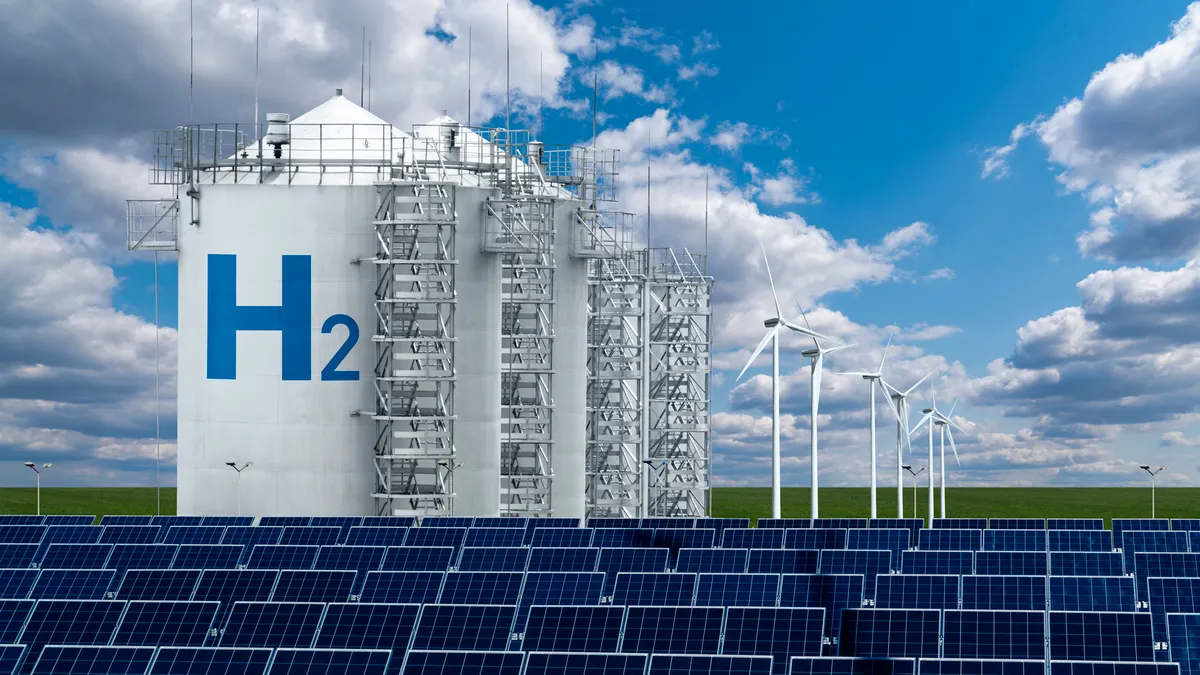Dive Brief:
- Both New York and Oregon have joined regional bids for hydrogen hub funding from the Department of Energy, representatives from both states said during a Thursday webinar hosted by the National Association of State Energy Officials.
- Both states have launched planning exercises intended to integrate hydrogen into their clean energy roadmaps, with current efforts focused on defining the resource that will qualify as “green” or renewable hydrogen and weighing how to distribute incentives.
- While the federal hydrogen hub fund is certainty attractive, there is more than one end game in mind, said Ian Latimer, senior program manager for the New York State Energy Research and Development Authority. “Even if you don’t win a hub, you have to plan for things,” he said. “Hydrogen is happening whether you win the hub or not.”
Dive Insight:
A federal offer of $8 billion in funding for regional hydrogen “hubs” remains keenly interesting to state leaders across the nation, but with the competition heating up, states are looking for partnerships that might shore up their bid for hub status — and becoming increasingly tight-lipped about their official application plans.
Both Latimer and Rebecca Smith, a senior policy analyst for the Oregon Department of Energy, said their respective states had hub applications in the works in partnership with neighboring states, although both declined to discuss any details of their applications with the audience of NASEO’s webinar.
“It wouldn’t be hydrogen if we didn’t talk hub,” Latimer said. “Governor [Kathy] Hochul has announced her intent to compete for a hub, and I can only go into so much detail, but in March she announced a multi-state agreement to form a northeast regional hydrogen hub.”
In Oregon, which has joined Washington state in an effort to create a regional hub in the Pacific Northwest, the state legislature has ordered a study of how hydrogen might benefit the state’s renewable energy and climate targets, Smith said. In addition to assembling and coordinating with stakeholders for the study, much of the conversation around hydrogen in the state has centered on how to define “green” or renewable hydrogen, she said.
“Perhaps one of the most important things that a legislature can do right now is to define clean renewable hydrogen,” she said. “This isn’t as straightforward as one might expect.”
Definitions could be based on lifecycle emissions or emissions at the point of production, feedstock or method of production, or by other means, Smith said. But establishing a definition, she said, will be critical to determining who is eligible for state-level renewable energy and hydrogen-specific incentives.
Whether states should focus on funding the production of hydrogen, or funding end-users who will create markets for hydrogen potential end-users also emerged as a critical question during the webinar. While Latimer said encouraging end-users to establish proof of demand seemed to be the key to launching a sustainable hydrogen economy, Smith said Oregon had come to a different conclusion when taking emissions into account.
The largest transit agency in the state, Oregon TriMet, "did a hydrogen feasibility study and essentially came to the conclusion that we don’t have a local supply of clean or low climate impact hydrogen. The climate impact is going to be affected by transporting it from California, Nevada or wherever, and there’s a lot of volatility in terms of price and availability” of hydrogen, Smith said. So Oregon has begun to solicit is projects that pair production with demand — creating a little excess hydrogen with which the state can begin to explore other options to expand the use of hydrogen.
CORRECTION: In the final paragraph, Rebecca Smith refers to a study by Oregon TriMet, the largest transit agency in the state. We have clarified the source of the study.













